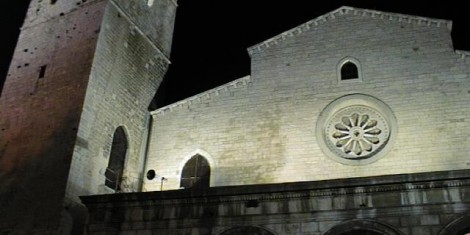BARLETTA
Barletta is an industrial and commercial town and it is situated in the north of Bari and in the south-east of the out-let of Ofanto. Its origins rise in III-II century a.C. thanks to the discovery of some graves of that age.
Places to see:
– The Cathedral dedicated to Santa Maria Maggiore . It is one of the four palatine Basles in Puglia
– the Castle built by Normans and rebuilt by Swabians in 1234
– “la cantina della disfida”
– The famous “Colosso” in bronze brought in Barletta from Costantinopoli.
ANDRIA
According to the number of inhabitants, Andria is the second town in province of Bari. It is situated in the slope of the Murgia.
Places to visit:
– The Cathedral (1198),in the inner there are mortal remains of Jolanda from Brienne and Isabella, Federico II’s wifes.
– Church of Sant’Agostino with its beautiful ogival portal, built in 200 by Teutonic Riders
– Church of Saint Francis, built in XIII-XIV century, keeps two ogival portals and typical baroque bell-tower
– Church of San Domenico (1398) belonged to “ Tardogotica” Age
– Santa Maria di Porta Santa (XV Century) with a portal of Renaissance
– Church of San Domenico (1398) belonged to “ Tardogotica” Age
– Palazzo Ducale, according to the legend, Corrado IV of Swabian was born here in 1228
– “Torre dell’orologio” contains a sundial of polychrome majolicas
– “Porta Sant’Andrea” or “Arch of Federico II”. In this way, Federico II came with his court before of being received by the patriciate of Andria.
CASTEL DEL MONTE
Castel del monte with its octagonal plan, was erected by emperor Federico II of Swabia on a hill near Andria.This place appears as a symbol of Swabia’s power. In the construction we can distinguish different elements belonged to the Romantic, Arabian , Norman, and Gothic style.
On every façade that is included between two towers, we can see two windows: one in the downstair and another one in the up stair. The portal, built following the Classic style, was built using coral breach.
The ground floor consists of eight halls that show different decorations for capitals.
On the up stair, there are eight rooms that correspond at the same rooms of the ground floor, in which the elegance of the Gothic style is conspicuous. This place belongs to the cultural and artistic patrimony of UNESCO.
Its octagonal shape makes the castle unmistakable, mysterious and picturesque; the octagonal construction refers to Federico II’s style. The castle was used by the emperor as a place of hunting; in fact, in the entire area, beats were periodically organised.










